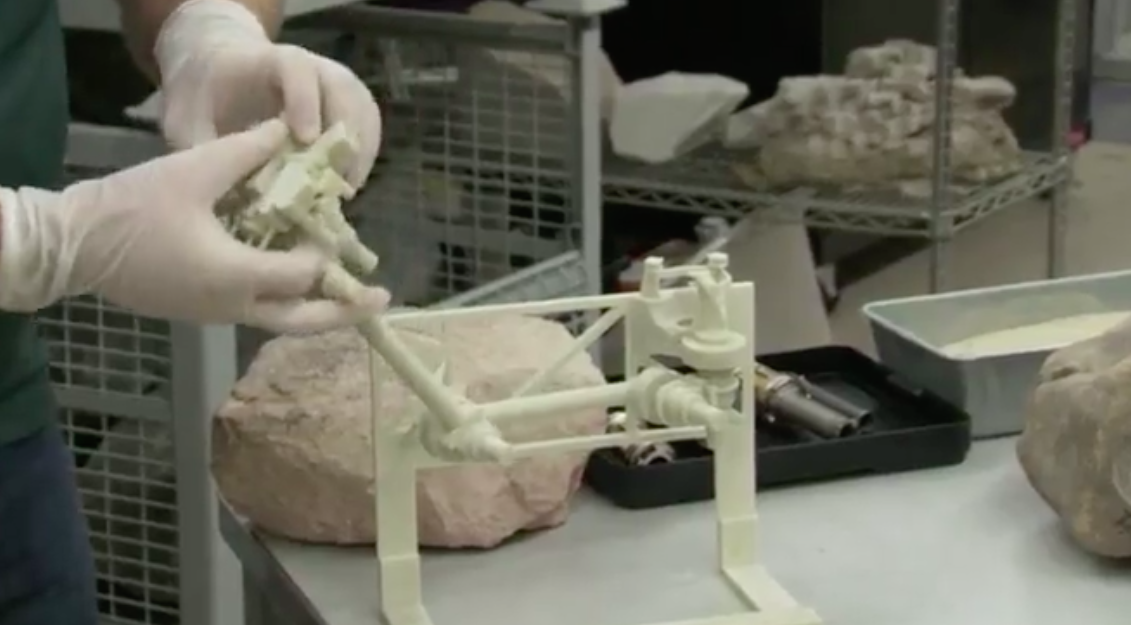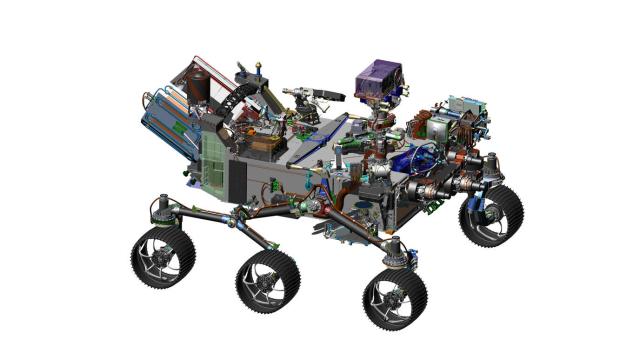NASA is racing to finish a new Mars rover, and the mission just got a launch and land date. The new rover will leave Earth by August 2020, and in February of 2021, it will hit the surface of the Red Planet to search for signs of life.
Mars 2020’s final design (Image: NASA/JPL)
If the unnamed rover — which NASA is temporarily calling Mars 2020 — looks familiar, there’s a good reason. It’s modelled on the very successful Curiosity rover, which landed in 2012 and, despite some glitches, has remained in good working order for years longer than expected. Although Mars 2020 looks a lot like Curiosity, there’s plenty under the hood that distinguishes it.
Mars 2020 will have better cameras and microphones as well as thicker wheels to keep it from breaking down like Curiosity’s did. There’s also a new coring drill and a ground-penetrating radar to look below the surface of Mars. Since Mars 2020’s primary objective is to look for signs of life, it will also have features to analyse organic chemicals, including a device that will test the ability to form oxygen on the planet for future colonisation efforts. Some rumoured features that the researchers considered, however, were ultimately rejected.
“We had been asked to study the possibility of bringing a helicopter with us,” Kenneth Farley, the project scientist for Mars 2020, said. “But Mars 2020 is certainly not going to be flying a drone.”

A model of Mars 2020’s robotic arm (Image: NASA)
Although the design for the 1050kg rover is finalised, there’s still plenty to do before its ready for launch in four years. Not only do they have to finish construction, NASA also has to select a landing site that will put the rover within range of the most likely hotbeds of previous Martian life.
“There’s a very short [launch] window in 2020,” Farley noted. “If we don’t hit it, we have to wait two years. So we’re working very hard to hit it.”
When the rover finally does hit Mars, the landing is going to be a nail-biter. The rover will enter the planet’s atmosphere at 17,700km/h and will use a combination of a supersonic parachute and above-ground rocket thrusters to brake during its descent. If all goes well, one of the first things the rover will beam back to us is footage of its (hopefully very soft) crash. And then Mars 2020’s real work can begin.
